In the realm of physical fitness, glutes often remain the unsung heroes. Not only do they play a pivotal role in everyday activities, but they also bolster our overall athletic prowess. By strengthening and enlarging these gluteal muscles, we can enhance our posture, assuage lower back pain, and amplify lower body power. Within this article, we’ll delve into the finest glute exercises for size and strength, furnishing thorough guidance to optimize your workouts. Let’s embark on a journey to explore these potent exercises capable of revolutionizing your posterior chain.
The Importance of Glute Training
The gluteal muscles are essential for various reasons, ranging from aesthetics to performance and injury prevention. In this section, we will delve into three significant aspects that make glute training indispensable.
Aesthetic Appeal
A well-developed set of glutes can greatly enhance one’s physical appearance, contributing to a more balanced and shapely physique. Many individuals seek to improve their glutes for this reason alone, as a toned and rounded posterior is often considered attractive. Training the glutes consistently and effectively will not only boost your confidence but also complement the overall symmetry of your body.
Functional Strength
The glute muscles play a vital role in various functional movements, such as standing, walking, running, and jumping. They are the primary muscles responsible for hip extension, which is crucial for athletic performance and daily activities. A strong set of glutes can enhance your power output in sports like sprinting, jumping, and weightlifting. Moreover, well-trained glutes can improve your overall stability and balance, allowing you to move more efficiently and safely.
Injury Prevention
Weak and underdeveloped glutes can contribute to various injuries and muscle imbalances. For instance, inadequate glute strength may lead to excessive strain on the lower back, hips, and knees. This can result in lower back pain, hip pain, or knee injuries. Furthermore, strong glutes can help maintain proper posture and alignment throughout your body, reducing the likelihood of injury during physical activities. By incorporating glute training into your fitness routine, you can effectively minimize the risk of injuries and enhance your overall muscular health.
The Anatomy of the Glutes
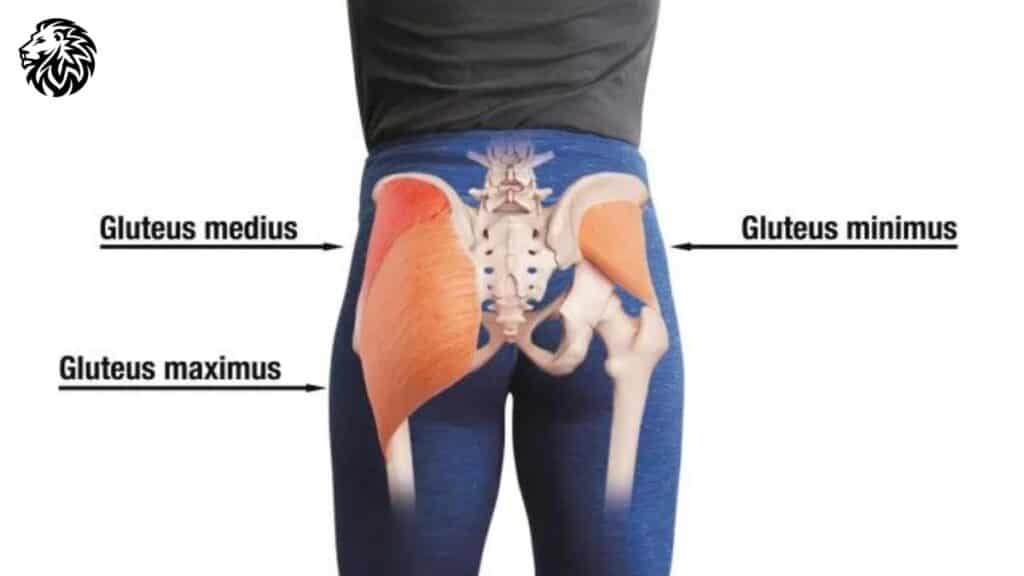
The gluteal muscles, or glutes, consist of three unique muscles cooperating to facilitate a wide array of movements and functions. Grasping the gluteal anatomy can aid in effectively targeting these muscles throughout your exercise regimen. The three main muscles making up your glutes are the gluteus maximus, gluteus medius, and gluteus minimus. Let’s examine these three primary gluteal muscles more closely.
Gluteus Maximus
As the most sizable and external of the gluteal muscles, the gluteus maximus originates from the posterior part of the ilium, sacrum, and coccyx. It then inserts into the iliotibial band and gluteal tuberosity of the femur. The gluteus maximus primarily extends and externally rotates the hip joint, playing an indispensable role in activities such as running, leaping, and ascending stairs.
Gluteus Medius
Beneath the gluteus maximus lies the fan-shaped gluteus medius, which originates from the ilium’s outer surface and inserts into the femur’s greater trochanter. The gluteus medius chiefly facilitates hip abduction and internal rotation. Additionally, this muscle is instrumental in stabilizing the pelvis during single-leg movements, including walking, running, and lunging.
Gluteus Minimus
The gluteus minimus is the smallest and deepest of the three gluteal muscles. It lies beneath the gluteus medius and shares a similar origin and insertion points, originating from the external surface of the ilium and inserting into the greater trochanter of the femur. The primary functions of the gluteus minimus are hip abduction and internal rotation, similar to the gluteus medius. This muscle also contributes to pelvic stability during single-leg movements and helps maintain proper alignment in the lower body.
By understanding the unique roles and functions of each gluteal muscle, you can design targeted workouts that effectively engage and strengthen your glutes for optimal size and power.
The Best Glute Exercises for Size and Strength
Utilizing a variety of exercises that focus on various aspects of the gluteal muscles is essential to effectively increasing your glutes’ size and strength. Here, we go over five of the best glute exercises, their proper technique, key advantages, and common mistakes to avoid.
Barbell Hip Thrust
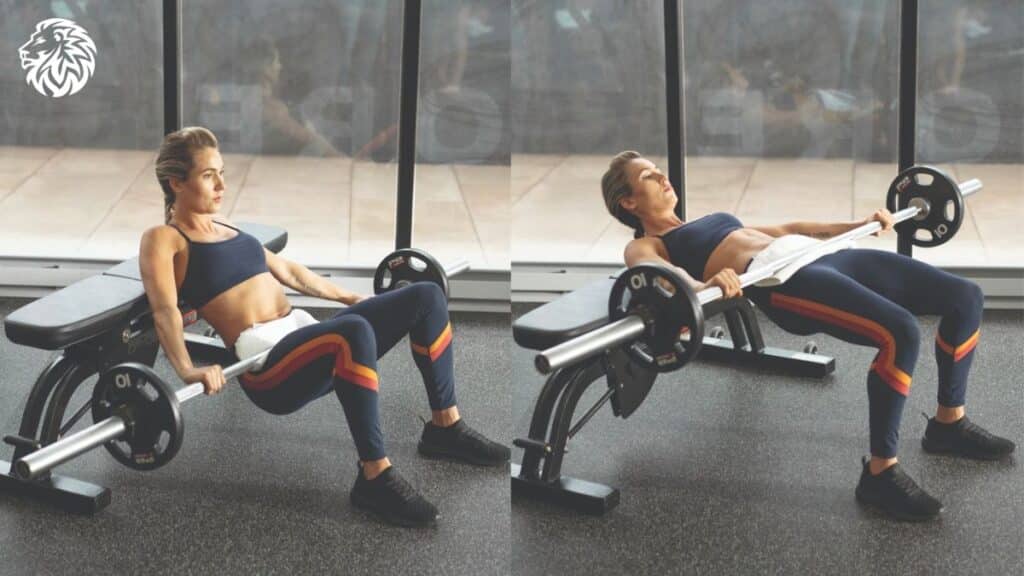
How to Perform:
- Sit on the ground with your back against a bench or padded surface, feet shoulder-width apart.
- Place a barbell across your hips, using a pad for comfort if needed.
- Drive your hips upwards by pressing through your heels, engaging your glutes, and extending your hips.
- At the top of the movement, your body should form a straight line from your knees to your shoulders.
- Lower your hips back down, ensuring controlled movement throughout the exercise.
Key Benefits:
- Isolates and activates the glute muscles effectively
- Allows for progressive overload through incremental weight increases
- Improves hip extension strength and power
Common Mistakes and Tips:
- Avoid hyperextending your lower back at the top of the movement.
- Keep your chin tucked and eyes forward throughout the exercise to maintain proper form.
- Ensure consistent tempo and controlled movement to maximize muscle activation.
Bulgarian Split Squat
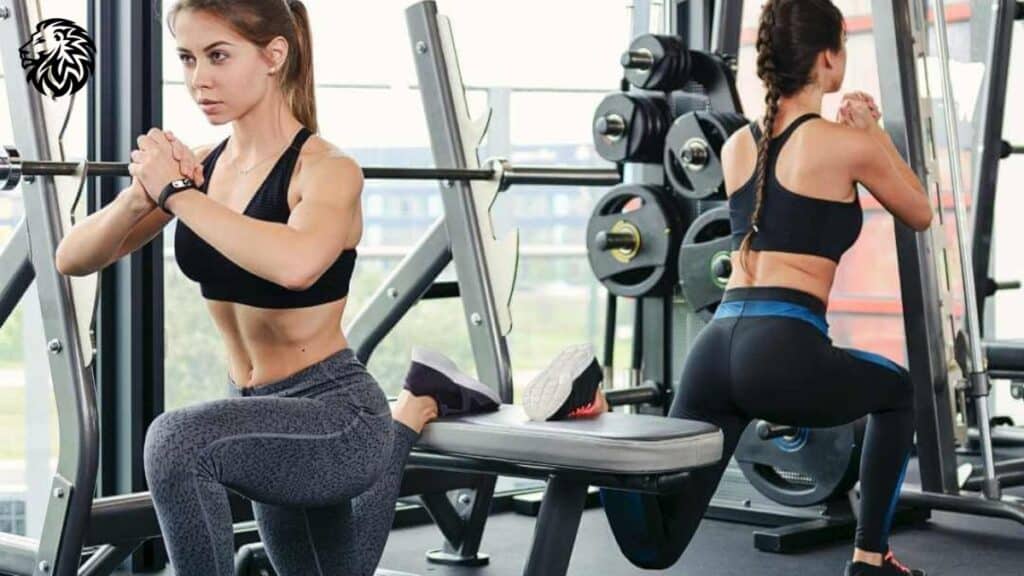
How to Perform:
- Stand about two feet in front of a bench, with your back facing it.
- Place the top of one foot on the bench behind you.
- Lower your body by bending your front knee until your thigh is parallel to the ground.
- Push through your front heel to return to the starting position.
- Complete the desired number of reps on one leg before switching to the other.
Key Benefits:
- Effectively targets the glutes, hamstrings, and quadriceps
- Enhances single-leg strength and stability
- Improves balance and coordination
Common Mistakes and Tips:
- Maintain a tall, upright posture throughout the exercise to avoid excessive forward lean.
- Avoid letting your front knee collapse inward; keep it aligned with your toes.
- Control the downward motion, focusing on activating your glutes and hamstrings.
Romanian Deadlift
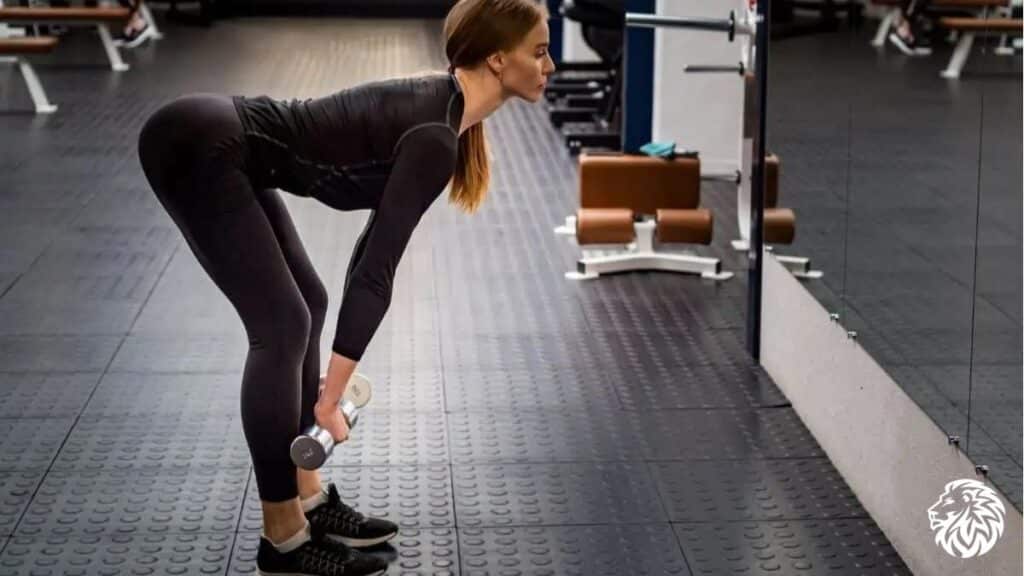
How to Perform:
- Stand with your feet hip-width apart, holding a barbell with an overhand grip in front of your thighs.
- Hinge at your hips while maintaining a slight bend in your knees, pushing your hips back and lowering the barbell.
- Lower the barbell until you feel a stretch in your hamstrings, keeping your back straight and chest up.
- Engage your glutes and hamstrings to reverse the motion, returning to the starting position.
Key Benefits:
- Effectively targets the glutes, hamstrings, and lower back
- Develops posterior chain strength and power
- Enhances hip mobility and flexibility
Common Mistakes and Tips:
- Keep your back straight and chest up throughout the movement to avoid rounding your back.
- Maintain a slight bend in your knees to protect your joints and engage your hamstrings.
- Focus on hinging at the hips, not bending at the waist.
Glute Bridge
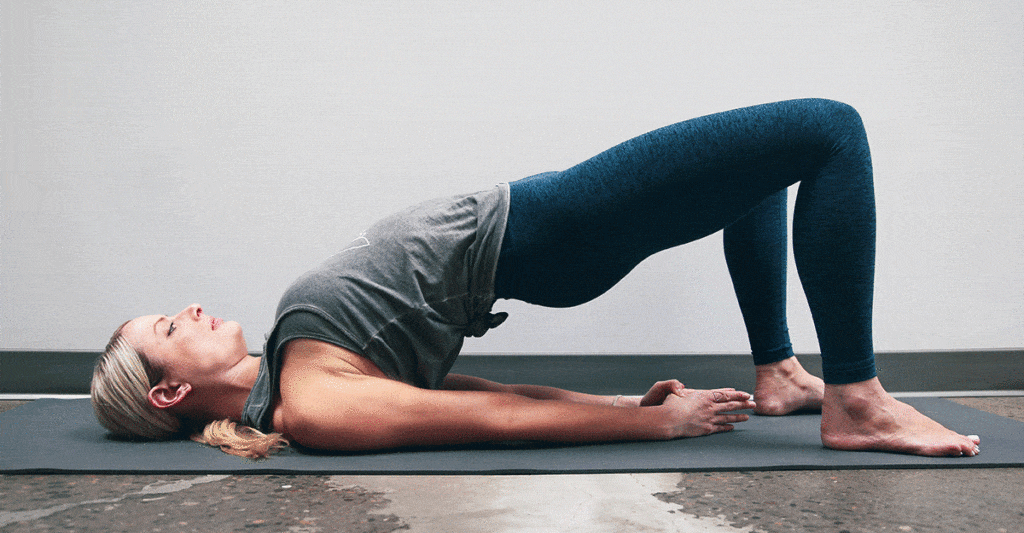
How to Perform:
- Lie on your back with your feet flat on the ground and knees bent at a 90-degree angle.
- Place your arms by your sides, palms facing down.
- Press through your heels and engage your glutes to lift your hips off the ground.
- At the top of the movement, your body should form a straight line from your knees to your shoulders.
- Lower your hips back down, maintaining control throughout the exercise.
Key Benefits:
- Isolates and activates the glute muscles effectively
- Requires minimal equipment and can be performed anywhere
- Improves hip extension strength and stability
Common Mistakes and Tips:
- Avoid hyperextending your lower back at the top of the movement; focus on engaging your glutes.
- Keep your feet flat on the ground and maintain equal pressure through your heels and toes.
- Perform the movement slowly and with control to maximize muscle activation.
Step-Up
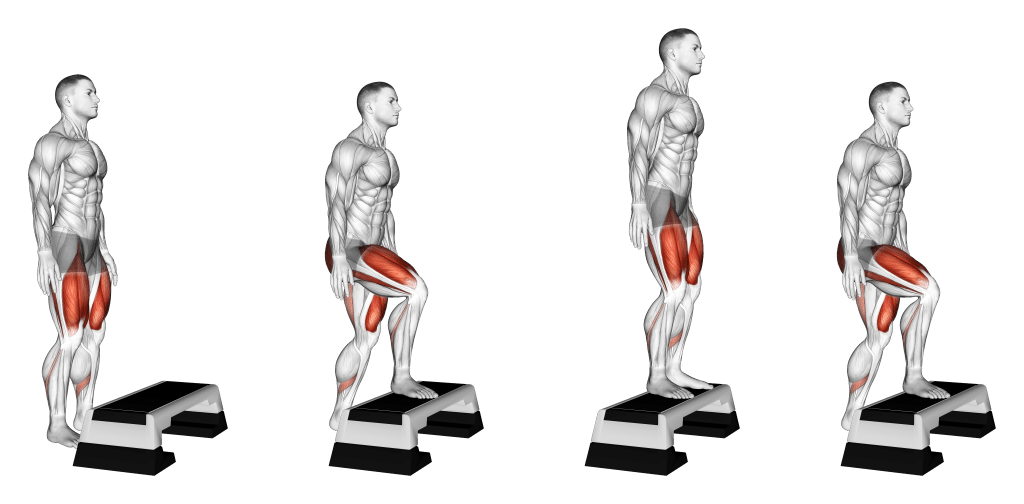
How to Perform:
- Stand in front of a bench or elevated platform, with your feet hip-width apart.
- Place one foot onto the bench, ensuring your entire foot is firmly on the surface.
- Press through the heel of your elevated foot and engage your glutes to lift your body onto the bench.
- Lower your body back down to the starting position in a controlled manner.
- Complete the desired number of reps on one leg before switching to the other.
Key Benefits:
- Targets the glutes, hamstrings, and quadriceps
- Enhances single-leg strength and stability
- Improves balance and coordination
Common Mistakes and Tips:
- Keep your chest up and maintain an upright posture throughout the exercise.
- Avoid using momentum or your lower leg to propel yourself upward; focus on engaging your glutes.
- Ensure your entire foot is securely on the bench to maintain balance and stability.
By incorporating these five glute exercises into your training routine, you can effectively target and strengthen your gluteal muscles for optimal size and power. Remember to focus on proper form, controlled movement, and progressive overload to maximize your results and minimize the risk of injury.
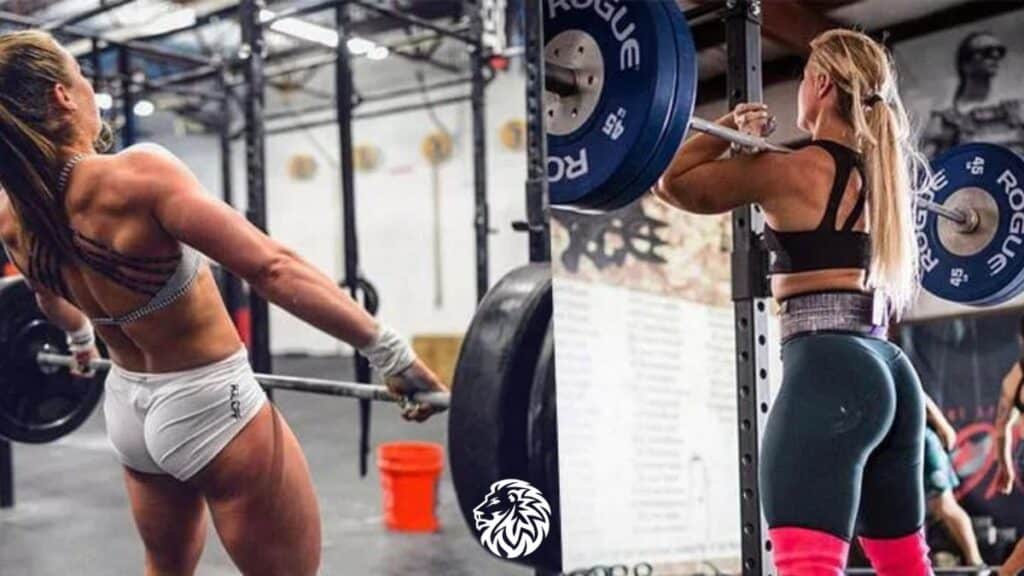
Programming and Progression
To achieve optimal glute development, it is essential to have a well-structured training program that focuses on the right balance of training frequency, reps and sets, and progressive overload. In this section, we will discuss these crucial elements to help you design an effective glute training plan.
Training Frequency
Training frequency refers to the number of times you train your glutes per week. Research suggests that training a muscle group 2-3 times per week is effective for most individuals, providing adequate stimulus for growth and allowing sufficient time for recovery. Depending on your goals and experience level, you can adjust your training frequency accordingly. Beginners may start with two glute-focused workouts per week, while more advanced trainees can increase their frequency to three or even four sessions.
Reps and Sets
Your specific goals and current fitness level will determine the number of repetitions (reps) and sets executed for each exercise. For hypertrophy (muscle growth), 8-12 reps per set with moderate to heavy weights are generally recommended, while strength-focused training typically involves lower rep ranges (3-6 reps) using heavier loads.
An equitable approach to glute training may entail 3-5 sets of 8-12 reps for compound movements, such as squats, deadlifts, and hip thrusts, along with 2-4 sets of 12-15 reps for isolation exercises, like glute bridges and clamshells. This method targets both size and strength gains while ensuring adequate volume for muscle growth.
Progressive Overload
Progressive overload is the principle of gradually increasing the demands placed on your muscles over time. This can be achieved through various methods, such as increasing the weight lifted, increasing the number of reps or sets, or improving exercise technique. Implementing progressive overload is essential for continued muscle growth and strength gains.
To effectively apply progressive overload to your glute training, aim to increase the weights used, reps performed, or sets completed in a gradual manner. For example, you could increase the weight lifted by 5-10% once you can comfortably perform the upper end of your target rep range for all sets. Alternatively, you could add an additional set to your workout or focus on improving your exercise technique to increase muscle activation and overall training efficiency.
By incorporating these key programming and progression principles into your glute training routine, you can effectively target and develop your gluteal muscles for optimal size and strength gains. Remember to listen to your body, prioritize recovery, and adjust your training plan as needed to continue making progress and avoid plateaus.

Nutrition for Glute Growth
Proper nutrition plays a critical role in supporting muscle growth and recovery, including the development of your glutes. By focusing on macronutrients, micronutrients, and hydration, you can create an optimal environment for muscle growth and overall health. Here, we discuss these key nutritional elements and how they contribute to glute growth.
Macronutrients
Macronutrients are the main components of your diet, including carbohydrates, proteins, and fats. Each plays a vital role in supporting muscle growth and recovery:
- Carbohydrates: Supply the energy needed for your workouts and daily activities. Strive for a diet abundant in complex carbohydrates, such as whole grains, fruits, and vegetables, to maintain steady energy levels and facilitate muscle recovery.
- Proteins: As the building blocks of muscles, proteins are crucial for muscle repair and growth. Integrate high-quality protein sources like lean meats, fish, poultry, dairy, legumes, and plant-based proteins to guarantee sufficient amino acid intake for muscle synthesis.
- Fats: Important for hormone production, cell membrane function, and overall health, healthy fats should not be neglected in your diet. Concentrate on consuming unsaturated fats from sources like avocados, nuts, seeds, and olive oil to maintain optimal hormone balance and muscle growth.
A well-rounded diet that meets your daily macronutrient needs can foster optimal muscle growth, including the glutes. Since individual requirements may differ, consult a nutrition professional to establish your unique macronrient targets based on your objectives and activity levels.
Micronutrients
Micronutrients, encompassing vitamins and minerals, are crucial for overall health and well-being. Although they may not contribute directly to muscle growth, they play a significant role in supporting various bodily functions, such as energy metabolism, hormone production, and immune function. Some key micronutrients for athletes and individuals focused on muscle growth include:
- Vitamin D: Supports bone health, immune function, and muscle function.
- Calcium: Important for bone health and muscle contractions.
- Iron: Involved in oxygen transport and energy metabolism.
- Magnesium: Essential for muscle function, energy production, and nerve function.
Ensure you consume a varied diet rich in fruits, vegetables, whole grains, and lean protein sources to meet your micronutrient needs and support overall health and muscle growth.
Hydration
Proper hydration is crucial for optimal athletic performance and muscle recovery. Water is essential for maintaining blood volume, regulating body temperature, and transporting nutrients to your muscles. Dehydration can negatively impact your performance, hinder muscle recovery, and increase the risk of injury.
Aim to consume at least 8-10 cups of water per day, with additional fluid intake during and after exercise to replace any losses from sweat. Remember that individual hydration needs may vary, so monitor your thirst and urine color to ensure you are adequately hydrated.
By focusing on these key nutritional elements, you can support optimal glute growth and overall health. Remember that consistency is critical, so maintain a well-balanced diet, prioritize hydration, and adjust your nutritional intake as needed to support your specific goals and activity levels.
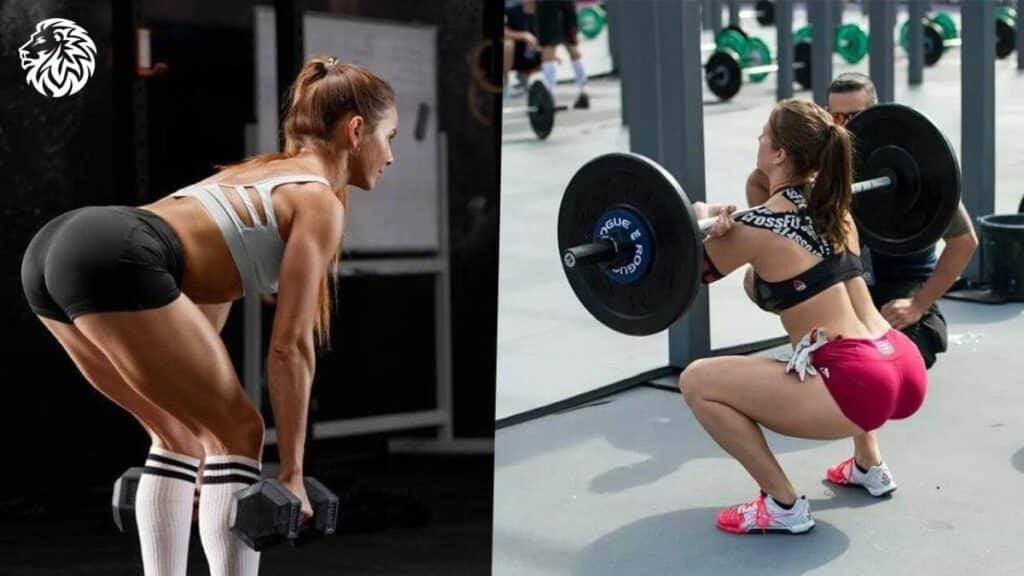
Conclusion
Incorporating these top glute exercises into your fitness routine can lead to significant gains in size and strength. By understanding the importance of glute training and following proper exercise techniques, you can unlock your posterior chain’s full potential. Remember that nutrition, warm-ups, and programming also play a key role in achieving your glute goals. With dedication and consistency, you’ll be on your way to a stronger, more powerful lower body.
Frequently Asked Questions
How often should I train my glutes for optimal growth?
For optimal glute growth, it is generally recommended to train your glutes 2-3 times per week. This frequency provides adequate stimulus for growth while allowing sufficient time for recovery. Depending on your goals and experience level, you may adjust your training frequency accordingly.
Can I target specific parts of the glutes with different exercises?
Yes, you can target specific parts of the glutes with different exercises. The gluteus maximus, medius, and minimus each have unique functions and can be emphasized with specific movements. For example, exercises like squats and deadlifts primarily target the gluteus maximus, while lateral movements such as clamshells and fire hydrants focus on the gluteus medius and minimus.
What are some good warm-up exercises to activate my glutes before a workout?
Some effective glute activation and warm-up exercises include clamshells, fire hydrants, and donkey kicks. These exercises help to “wake up” your glutes and prime them for the main exercises in your workout, ensuring they are engaged and ready to work.
How important is nutrition in glute growth, and what should I be eating?
Nutrition plays a critical role in supporting muscle growth, including the development of your glutes. The best muscle growth can be facilitated by a well-balanced diet that provides the necessary micronutrients in addition to your daily requirements for carbohydrates, proteins, and fats. To aid in the development of your glutes, put an emphasis on consuming complex carbohydrates, high-quality protein sources, healthy fats, and a variety of fruits and vegetables.
How can I avoid plateauing in my glute training and continue to make progress?
To avoid plateaus and continue making progress in your glute training, implement the principle of progressive overload. This can be achieved through various methods, such as increasing the weight lifted, increasing the number of reps or sets, or improving exercise technique. Continually challenging your muscles with new stimuli will help promote continued growth and strength gains. Additionally, ensure that your training program incorporates variety and addresses any muscle imbalances or weaknesses to maximize your progress.
References:
- Contreras, B., & Schoenfeld, B. (2017). The Glute Lab: The Art and Science of Strength and Physique Training. Victory Belt Publishing.
- McGill, S. (2016). Low Back Disorders: Evidence-Based Prevention and Rehabilitation. Human Kinetics.
- Schoenfeld, B. J. (2016). Science and Development of Muscle Hypertrophy. Human Kinetics.







